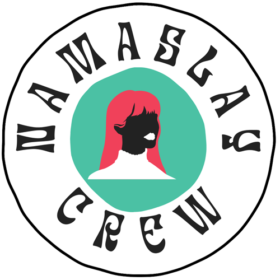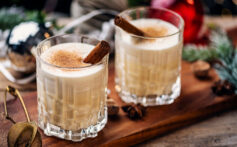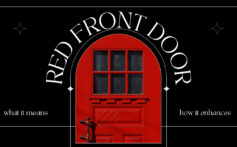How to Make Your Own Burlesque Pasties
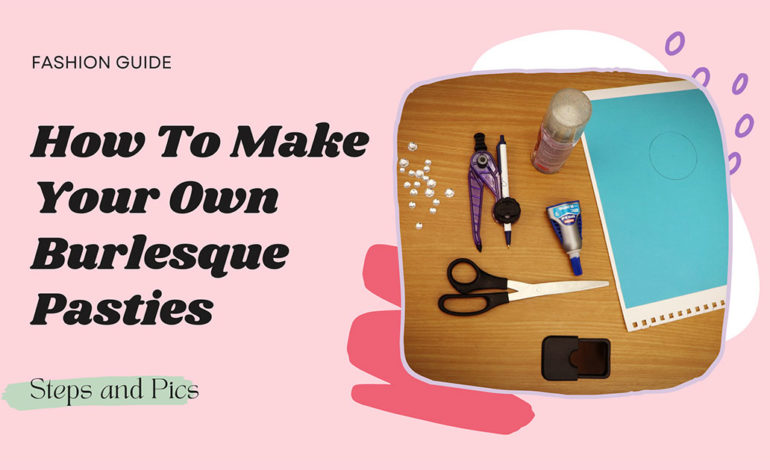
How to Make Your Own Burlesque Pasties
Burlesque is a beautiful art that has taken on many forms over the years.1 As burlesque has evolved, so have its costumes. However, there is one aspect that has stayed constant throughout the many years of burlesque—using pasties. In fact, burlesque pasties are one of the highlights of modern-day burlesque costumes, playing on the provocative side while still exuding extravagance and style. Whether you are just getting into burlesque and are ready for a costume of your own or you’re just curious about how to make pasties, we’ve got you covered.
What Are Burlesque Pasties?

Pasties are a burlesque performer’s long-time friend. They are small, creatively decorated patches that serve as covers for your nipples. Burlesque pasties can come in any color as well as in a variety of unique shapes and sizes, all of which can be decorated with fun things like sequins and tassels. They are most commonly placed by using an adhesive like body-safe glue or tape to adhere them to the breast. Wearing pasties is a great way for performers to tease without having to reveal it all.
Where, Exactly, Did Pasties Come From?
The popular emergence of pasties began in the late 1800s as Western culture continued to become more intrigued with “exotic dancing.” This was often the term used for another culture’s traditions, such as belly dancing. 2 Interest in “exotic performers” at gatherings like the World’s Fair soon inspired other performers to adopt similar clothes and stage outfits.
For example, many belly dancers often wore translucent clothing featuring extravagant breastplates and pieces, which inspired other performers. 3 These breastplates soon became popular in circus acts, which eventually turned into the pasties that we know today.4
After their emergence in the circus, pasties gained a great deal of popularity when burlesque performers introduced them into their nightly costume-wear lineup. Burlesque dancers had to be careful at the time, as in many cities, there were still strict indecency laws as well as laws making performing in the nude illegal.
To avoid legal trouble for performing “nude,” performers began wearing pasties as detailed and bawdy as their costumes. As years went on, pasties became more extravagant and a major part of most burlesque performers’ costumes. Now, pasties are not only a popular part of a costume, but they are most often handmade by the performers as well. 5
Pasties Are Not Just for Burlesque
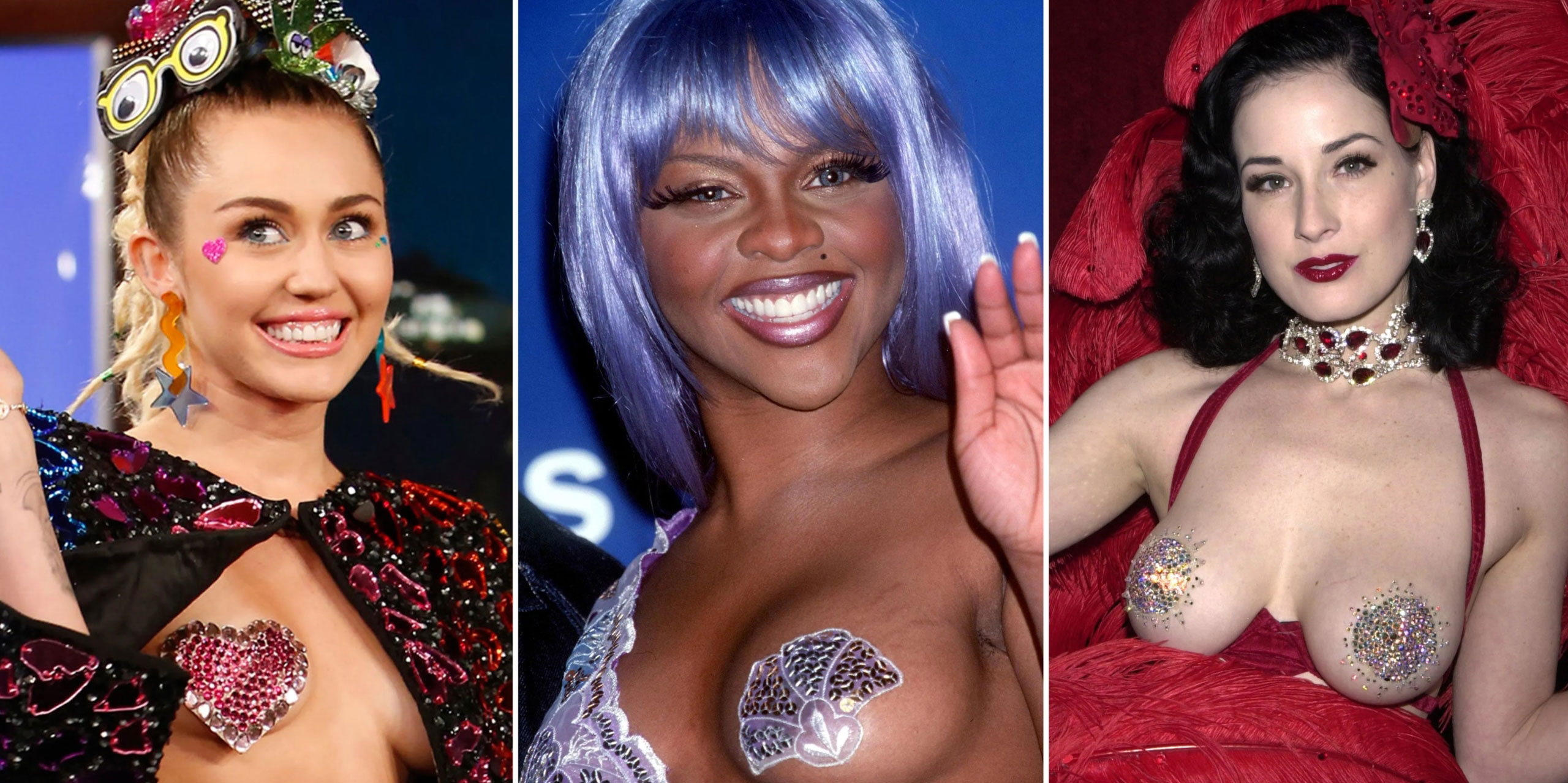
Anyone else remember this Lil Kim purple pasty moment at the 1999 MTV Video Music Awards? Or what about Riri giving us this sweet and innocent sexy look?
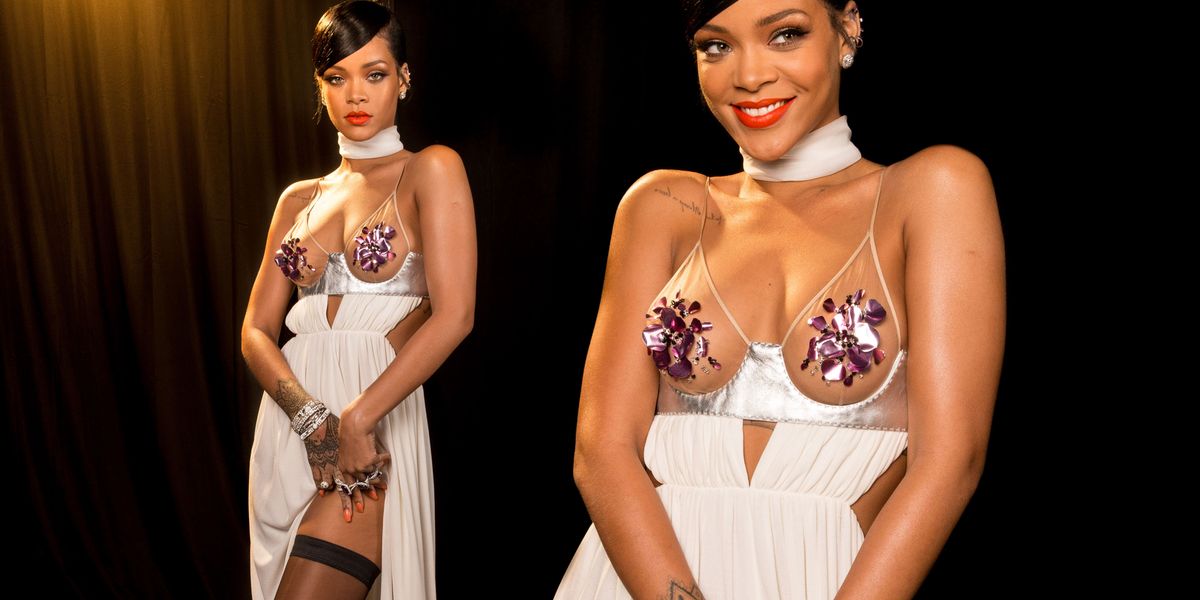
Girls be wearing pasties as tops, I’m telling ya’ll! Check out Nikki rockin the look with a blazer. SLAY QUEEN!

Materials You Will Need To Make Pasties At Home
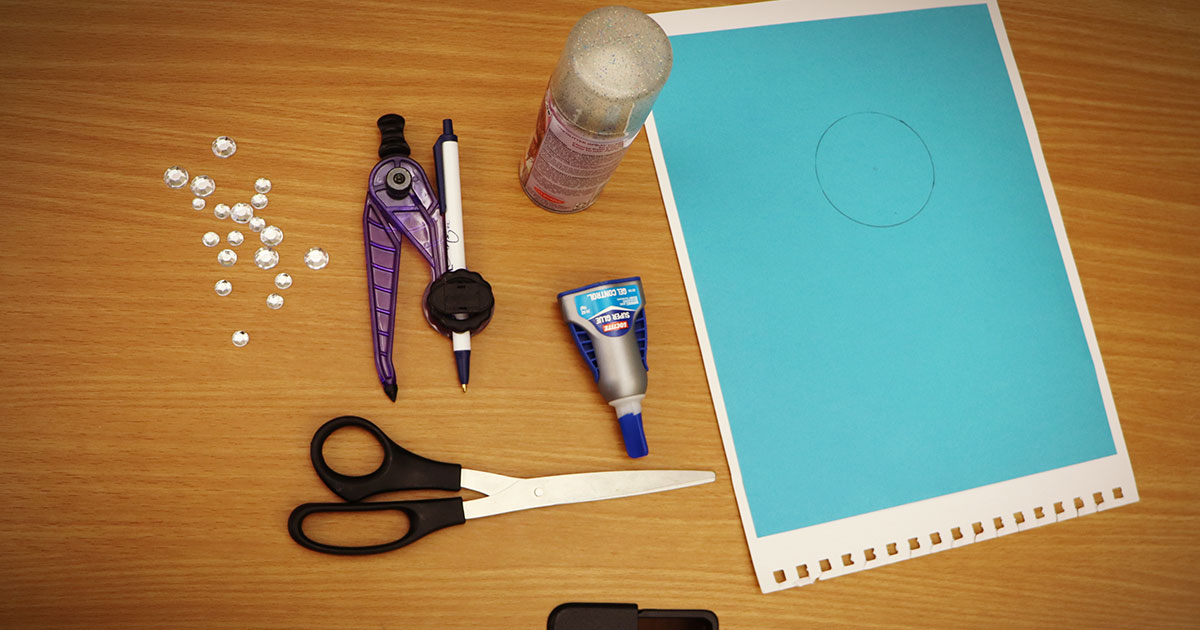
While every homemade pair of pasties are unique to their creator, there are a few essential materials you will want to keep in mind when starting the process of making your own. Some of the best materials to use when making burlesque pasties include:
Fabric of Your Choice
When it comes to choosing a fabric for your pasties, make sure it can withstand heat from an iron. Also, don’t worry if you can’t find any fabric that perfectly fits your personality or the look you’re going for because you can add a variety of decorations anyway. Find a nice, durable fabric that you think will be comfortable and cute as a pasty.
Buckram
Buckram is a material that is most often found in things like the lining of hats. It is a firm material that can be molded to whatever shape you create when it’s damp, and then it dries in that form. Buckram is a great material to line your pasties so that you can apply adhesives and make them more durable. If you are unable to find buckram anywhere, some people use foam paper or even cardboard as a replacement to form their pasties the way they need to.
Heat ‘N’ Bond
Heat ‘N’ Bond is a miracle worker when it comes to creating quick costumes. The adhesive works to bond fabric so that you don’t have to worry about sewing or pinning anything together. Heat ‘N’ Bond is extremely strong and durable and works great for combining your buckram and fabric together quickly.
Decorative Materials
There are a multitude of different decorative materials you can use when creating your burlesque pasties. Think about a specific style, design, or look you want to go for, and then choose the different materials that can help to create it. Tassels are extremely common and help to give extra flair to pasties.
They also are great for dancers as they help to emphasize movements and give the eye something to look at. Sequins are common as well, and they help make pasties look bright and extravagant. Other common materials used to decorate burlesque pasties include:
- Glitter
- Rhinestones
- Jewels, gems, and charms
- Stickers
- Faux fur
- Feathers
Tools You Will Need
Luckily, you do not need too many tools to make your pasties. Before you get started, just make sure you grab these tools.
An Iron
Pasties are relatively simple to make, thanks to how small they are. The biggest tool you are going to need is an iron, as well as a safe surface to use it on like an ironing board. You’re only going to need to use your iron once, but make sure it is preheated and ready to go once you start crafting.
Hot Glue
Hot glue will be a top tool for you while creating your burlesque pasties. It’s especially helpful when it comes to the decorating part, as dealing with tiny gems can be difficult with large types of adhesives. Hot glue is also much more powerful than other types of adhesives, making it the perfect choice to keep your pasties lasting long and looking beautiful.
Scissors
Scissors will make a quick appearance in your burlesque pasty crafting. You’ll need them when cutting your fabric and buckram, as well as any other accessories you might have to trim to shape. You’ll also most likely use scissors to cut out your desired shape once you begin forming your fabric, so keep them close.
Measuring Equipment (If Needed)
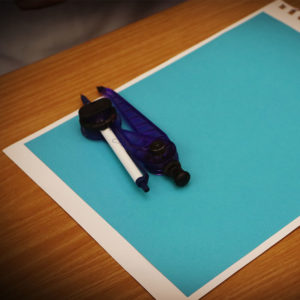
Measuring equipment like a small ruler is always helpful when it comes to crafting anything. If you want to make sure your details are perfect, a measuring tool will help. Of course, making pasties can also be done without any measuring equipment, as you shape the fabric as you go. The most crucial part is just ensuring that the pasties you’re making are large enough to cover your nipples.
How to Make Your Own Pasties
Making your own pasties doesn’t have to be complicated. Here are four simple steps to follow when making your own burlesque pasties:
Cut Out a Basic Shape
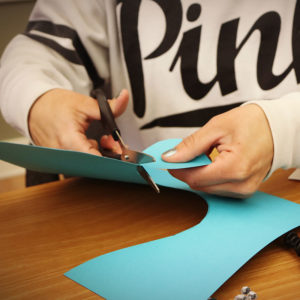
The first step of making your pasties involves cutting your fabric and buckram. You’ll want to take your fabric and cut out a basic shape, like a large square or circle, depending on what will make shaping it easiest at the end.
You are going to cut two pieces of fabric that are the same size and shape, which will turn into each pasty. After you have cut your two fabric pieces, you’ll do the same with your buckram.
With your buckram, you’re going to want to cut out two pieces that are slightly smaller than your fabric squares.
Apply Heat ‘N’ Bond

Once you’ve cut your fabric and buckram into your desired shapes, you are going to cut a piece of Heat ‘N’ Bond that’s roughly the same size, just a bit smaller than the fabric and buckram. The adhesive should be placed on the underside of the fabric that won’t be showing. Take the Heat ‘N’ Bond you shaped and place it glue side down onto your buckram.
Your fabric should be the biggest piece, followed by a slightly smaller piece of buckram, and a slightly smaller piece of adhesive. After you have placed your adhesive in the right spot, take your iron and bond it to the fabric. To be safe, don’t forget to read the instructions on the Heat ‘N’ Bond adhesive before using.
Shape the Pasties
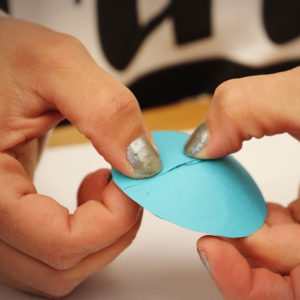
After your pasties have cooled down from being ironed, you can cut the desired shape you want into them. This can be a lot easier if you use a stencil. Some of the most common shapes you might see for pasties include hearts, teardrops, stars, and circles. Once you have decided on your shape, take your stencil and trace your shape into the buckram. After you’ve done this to both pieces of fabric, you can then cut your pasties out.
To give your pasties the cone shape that helps them pop slightly off the breast, you will want to cut a small pie slice into your desired shape. The larger you cut this little slice, the more off of your body and pointy the pasty will be. This is because once you cut out the sliver of fabric, you then close the shape back together with adhesive. This helps to give it more of a 3D effect.
Decorate
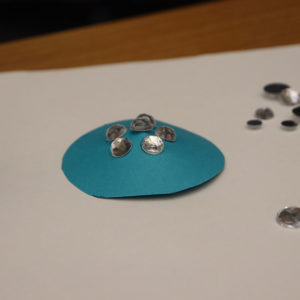
Once your pasties are shaped and dry, you can decorate them to your heart’s content. There are a variety of different styles that you can go for, whether you’re more of a minimalist or you’re looking to make them as show-stopping as possible. When decorating, your best tool will most likely be hot glue. When dealing with small decorations like sequins and rhinestones, hot glue is the perfect tool to let you do detailed, intricate work or attach large pieces.
Adding Your Own Flair
Making pasties can be fun, especially when you get to add your own little design flair. The best part about making your own pasties and costumes is being able to tailor it to your liking, while making something that reflects your personality at the same time.
Adding your own flair to a pasty can be easy, you might just need some inspiration first. Some minimal designs include fabric with a sheer tone and solid color, with just gemstones attached on the exterior to make it pop. Other performers like to give their pasties just as much personality as themselves, adding long chains or tassels to dance with them.
Check out this video to learn how to make pasties with tassels:
Making Burlesque Pasties at Home
Making your own pasties is a great way to get back in touch with your crafty side while still having fun. you never know when you might need your own unique pasties. Whether you’re making pasties for an upcoming burlesque performance or to keep in a drawer at home for special occasions, we hope you’ll try these tips and ideas to make your pasties truly unique!
Sources:
- Dodds, S. (2013). Embodied Transformations in Neo-Burlesque Striptease. Dance Research Journal, 45(3), 75-90. Retrieved April 27, 2022, from https://www.cambridge.org/core/journals/dance-research-journal/article/abs/embodied-transformations-in-neoburlesque-striptease/57F44AE45E8AAFAF619A083D6069CF1A
- Keft-Kennedy, Virginia. (2005). Representing the belly-dancing body: feminism, orientalism, and the grotesque, PhD thesis, School of English Literatures, Philosophy, and Languages, University of Wollongong. Retrieved April 27, 2022, from http://ro.uow.edu.au/theses/843
- Johnson, Elisabeth. (2006). “Representation of Middle Eastern Culture through Belly Dance in the US”. Syracuse University Honors Program Capstone Projects. 650. Retrieved April 26, 2022, from https://surface.syr.edu/honors_capstone/650
- Heitmann A. (2018). Nordic Modernists in the Circus. On the Aesthetic Reflection of a Transcultural Institution. Humanities. 7(4):111. https://doi.org/10.3390/h7040111
- Cervellon, M.-C., & Brown, S. (2018). Reconsumption reconsidered: Redressing nostalgia with neo-burlesque. Marketing Theory, 18(3), 391–410. https://doi.org/10.1177/1470593118777892
